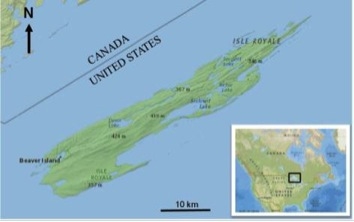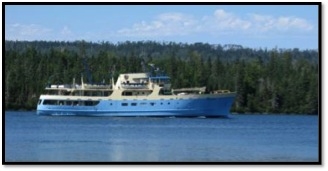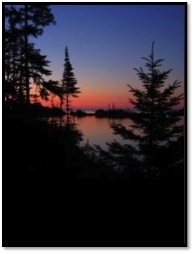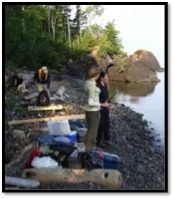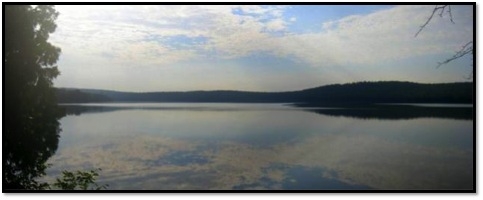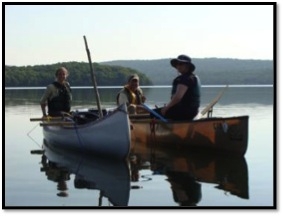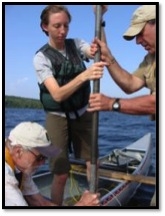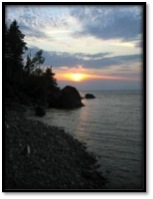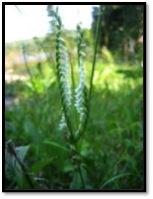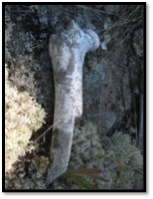Understanding Climate-Driven Change in Boreal Lakes of Isle Royale National Park
Field Team Members: Kristin Strock, Jasmine Saros, Daniel Engstrom*, and James Almendinger*
*St. Croix Watershed Research Station, Science Museum of Minnesota
Dates: August 21st – August 29th 2013
Funding for this project was generously provided by the Dan and Betty Churchill Exploration Fund and the National Park Service George Melendez Wright Fellowship
Isle Royale National Park (ISRO) is an island over 500,000 acres in size, located in the northwest corner of Lake Superior (Figure 1). Accessible only by boat or seaplane, ISRO lake ecosystems are designated as Class I Wilderness due to relatively pristine and undisturbed landscapes. As a result, these boreal lake ecosystems are high priorities for protection and conservation.
Recent research in ISRO suggests that lake habitat quality in this remote park is changing rapidly. A fossil record of algae from Siskiwit Lake in ISRO reveals that vertical temperature gradients in the lake have changed over the 20th century, likely due to increasing air temperatures (Saros et al. 2012). Increasing surface water temperatures have been observed in over 100 large lakes around the world, with this change attributed to increasing air temperatures as a result of global climate change (Schneider and Hook 2010). Despite the prevalence of observed increases in water temperatures around the world, long-term trends in lake mixing remain unclear. In lake ecosystems, vertical temperature gradients in the water column have a strong effect on habitat quality. Specifically, lakes undergo vertical, thermal stratification during the summer, with a warm, mixed layer developing in the surface waters and a cool, dark layer forming in the lake bottom. Changes in the depth of the surface mixed layer can alter the availability of cold water refuge required by certain fish species, influence nutrient cycling, and modify productivity and diversity of plankton.
Funds from the Churchill Exploration Fund were used to support travel to ISRO to address these issues. This trip resulted in a successful collection of almost 10 meters of lake sediment. Using this sediment record, a new algae-based model can be used to reconstruct lake mixing from fossil diatom records contained in lakes (Saros et al. 2012). Diatoms are a type of algae with a glass-like cell wall that preserve in lake sediment. Specific diatom species have known ecological preferences and as a result, can be used to reconstruct environmental variables such as acidity and nutrient concentrations (Dixit et al. 1994), salinity (Fritz et al. 1991), and now, lake mixing (Saros et al. 2012). This new tool provides a record of lake habitat that was previously unavailable to ecologists and can be used to better understand the influence of large-scale drivers, such as climate change, on lake mixing. The sediment record collected on this trip could extend the diatom record from approximately 200 years which was collected in 2011 with a sediment core of only 50 centimeters to a record of environmental change that could potentially span 10,000 years.
- Map of Isle Royale National Park located in the northwest corner of Lake Superior
- Isle Royale National Park is an island located in the northwest corner of Lake Superior. It is accessible only by seaplane or boat, such as the Ranger III ferry operated by the National Park Service pictured above.
- In Isle Royale, we are studying the effects of climate on lakes in boreal forest ecosystems. At 1.3 billion hectares, the boreal forests are the second largest terrestrial ecosystem in the world and boreal lakes are the most numerous on Earth (Schindler 1998). Boreal ecosystems are predicted to be one of the biomes most affected by continued climate warming, threatening the many ecosystem services they provide including carbon storage, flood control and water filtration (Ruckstuhl et al. 2008).
- In Isle Royale, we are studying the effects of climate on lakes in boreal forest ecosystems. At 1.3 billion hectares, the boreal forests are the second largest terrestrial ecosystem in the world and boreal lakes are the most numerous on Earth (Schindler 1998). Boreal ecosystems are predicted to be one of the biomes most affected by continued climate warming, threatening the many ecosystem services they provide including carbon storage, flood control and water filtration (Ruckstuhl et al. 2008).
- The National Park Service provided transport across Lake Superior to the north shores of Isle Royale where we set up camp and began our trek to Desor Lake.
- The National Park Service provided transport across Lake Superior to the north shores of Isle Royale where we set up camp and began our trek to Desor Lake.
- Desor Lake in Isle Royale National Park
- We obtained almost 10 meters of sediment from Desor Lake that will be used to develop a record of diatom-interred changes in lake habitat that spans millennia.
- We obtained almost 10 meters of sediment from Desor Lake that will be used to develop a record of diatom-interred changes in lake habitat that spans millennia.
- Isle Royale National Park flora and fauna include the ladies tresses orchid pictured above and moose (evidenced by the bone pictured at right).
- Isle Royale National Park flora and fauna include the ladies tresses orchid pictured above and moose (evidenced by the bone pictured at right).
- Isle Royale National Park flora and fauna include the ladies tresses orchid pictured above and moose (evidenced by the bone pictured at right).
Literature Cited
Dixit, S.S. and Smol, J.P. 1994. Diatoms as indicators in the environmental monitoring and assessment program – surface waters (EMAP-SW). Environmental Monitoring Assessment 31:275-306.
Fritz, S.C.; Juggins, S.; Battarbee, R.W. and Engstrom, D.R. 1991. Reconstruction of past changes in salinity and climate using a diatom-based transfer function. Nature 352:706-708.
Ruckstuhl, K.E., E.A. Johnson, and K. Miyanishi. 2008. The boreal forest and global change. Phil. Trans. R. Soc. B. 363(1501):2243-2247.
Saros, J.E.; Stone, J.R.; Pederson, G.; Slemmons, K.E.H.; Spanbauer, T.; Schliep, A.; Cahl, D.; Williamson, C.E.; Engstrom, D.E. 2012. Climate-induced changes in lake ecosystem structure inferred from coupled neo- and paleo-ecological approaches. Ecology. 93(10): 2155-2164.
Schindler, D.W. 1998. A dim future for boreal waters and landscapes. BioScience 48(3):157-164.
Schneider, P. and Hook, S.J. 2010. Space observations of inland water bodies show rapid surface warming since 1985. Geophysical Research Letters 37:1-5.


